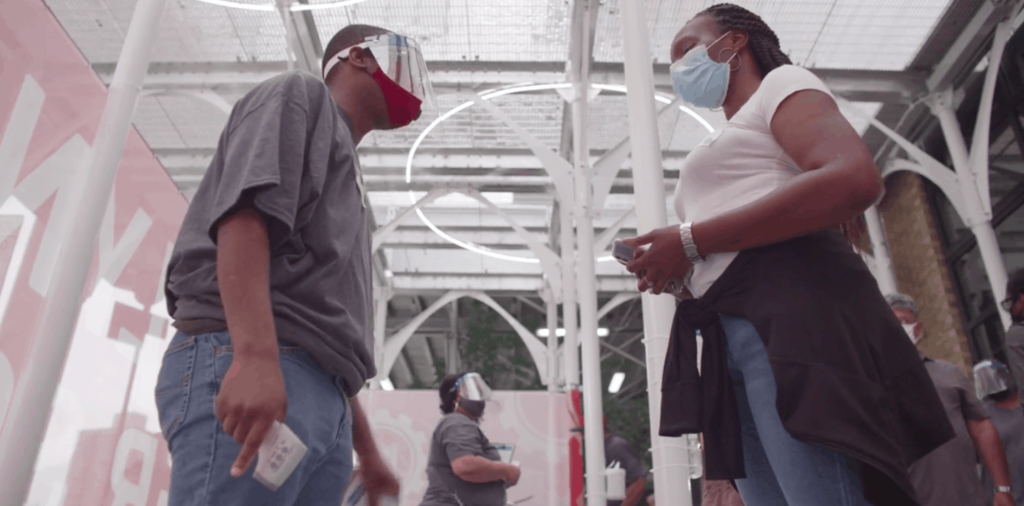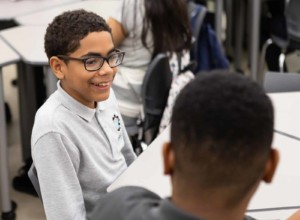It’s Time to Prepare for COVID-19 Resurgence: Six Steps Your School Can Take

Imagine it’s November 2020. School doors have been open for two months. The flu season, compounded by a COVID-19 resurgence, is worse than any in recent memory. Health care systems are strained. Schools are overwhelmed with presumptive positive investigations and inadequate contact tracing. Families are panicking.
How can school communities avoid this scenario? Prepare for resurgence now, before flu season starts.
At Brooklyn Laboratory Charter Schools (LAB), we’re not just building plans to open classroom buildings, we’re also designing processes aimed to keep students, families, teachers, and staff safe if resurgence strikes. To do that, we are working to create plans that embrace public health, medical, and design expertise and pursue a coordinated effort to prepare to manage the risks and realities of resurgence.
We at LAB want to share what we have learned over these past five months of preparation. The following are six steps public schools can take to prepare for the resurgence:
1. Take a public health approach. Public officials are increasingly championing reopening approaches that are untethered to science, based on circular logic (e.g., justifying the resumption of in-person school by stating the need to reopen schools), and, ultimately, harmful. Instead, schools should prioritize high-leverage, practical approaches that have been scientifically proven to reduce viral spread, including wearing facemasks, social distancing, cleaning and disinfecting, ensuring air circulation and quality, and hand-cleaning. Schools should also consider behavioral responses to different efforts to safeguard schools, in order to avoid unintended consequences. Schools should create robust and clear protocols that reflect priorities to prevent the spread of the virus within the school and during arrival and departure from the building.
2. Minimize harm and promote well-being. Remote learning can create new risks, including nutritional insecurity, lack of access to essential services, learning loss, threats to social and emotional well-being, and exposure to domestic violence, child abuse, substance abuse, and neglect. Consistent with guidance from the Parabola Project, these risks must be managed and minimized. In order to support each individual, schools must recognize that students—whether in-person or remote—have assets (e.g., family, culture, and community) and challenges (e.g., adversity or traumatic stressors). Resurgence will amplify challenges. To promote resilience, both remote and in-person schools must foster a sense of safety and belonging, build and maintain primary person relationships, and integrate strength and mindset development into the core school day.
3. Set deliverables to ensure collaboration and engagement. Reopening is too complicated for any individual or team to solve, and we must work through the specific procedure and system deliverable challenges together. Teachers, deans, administrators, families, and students need to engage and collaborate in order to keep the school community safe. Schools must empower and make time for the educators who are closest to scheduling and cultural systems to engage deeply in tactical preparation. The lack of national leadership has created a need and an opportunity for schools and teachers to stand up, collaborate, and develop plans to address some of the most intractable challenges.
4. Move forward incrementally and iteratively. Schools need to create step-by-step plans and embrace an iterative approach that allows them to challenge and revise their working assumptions. At Brooklyn LAB, we’re developing new systems in a way that allows us to frequently reflect upon and evaluate what we learned during each phase. As a school community, we are acknowledging the importance of outlining key differences in procedures and working to evolve new systems until we get them right. For instance, we have created a set of concrete, incremental steps to understand how to build student and adult schedules that will simplify contact tracing and are building out deliverables to help operationalize those plans.
5. Prepare plans to transition between in-person and remote school, and keep preparing for the next phase. Returning to school this year will be a bit like learning to drive a manual car—with a lot of awkward transitions, abrupt starts, and stops, and the occasional need to restart when the car stalls. As drivers of this new kind of school, we need to teach ourselves how to smoothly transition between phases and to accept that sometimes we’ll need to slow down and shift to a lower gear to accommodate new hazards in the road. Every time school shifts from in-person to remote, or from remote back to in-person, we’ll need an adjustment period before acceleration; if we plan for those in advance, those transitions will become less dangerous, and hopefully, more seamless.
For instance, when school goes remote, teachers will need to roll out new lessons and remind students and families of new norms and expectations. This means teachers will need more time to prepare, not only for in-person lessons but for what it would take to switch lessons to remote with little notice. When in-person learning resumes, teachers will need time to understand any learning gaps and adjust lessons accordingly. Schools will also need to reacquaint students with social-distancing rules and re-establish a mask culture.
One of the ways we are aiming to smooth these inevitable transitions at LAB is by providing success coaching for each student. To ensure the continuity of learning, especially in transitions between remote and in-person school, we are matching each scholar with a “success coach”—a trusted adult who will help them navigate these transitions.
6. Make decision-making transparent and grounded in evidence. Schools should rely on sound evidence as a basis for all decisions for opening and closure. These decisions should also be made transparently, and in a way that allows the school community to understand why the decisions were made. For example, at LAB, we are standing up a set of resurgence management dashboards to help manage opening and closure decisions, that include public health trends, health-system capacity, learning, wellbeing, and school safeguarding indicators. From classroom closure and investigation to cleaning protocols that aim to restore a safe environment, approaches grounded in evidence will save lives.
The school bus is an apt analogy for preparing for the COVID-19 resurgence. Staff are the drivers and attendants, but we’re all in this together. We need to make sure everyone is safely onboard and comfortably situated for the inevitable turns of this school year. Avoiding that preparation sets us up for painful bumps and derailments that further harm our students, staff, and families.
For more, see:
- Schools Need a Success Coach for Every Learner
- Preparing to Reopen: Six Principles That Put Equity at the Core
- To Reopen, America Needs Laboratory Schools
- How to Reopen Schools: A 10-Point Plan Putting Equity at the Center
- Reopening Schools: A Scheduling Map for Educators to Plan the Who, What, When, Where, and How of Learning this Fall
- The Front Porch: A New Approach to Support the Health, Safety, and Well-Being of Our School Communities
- Safeguarding Back to School: Preparation for a Healthy Return to School in Downtown Brooklyn
Stay in-the-know with innovations in learning by signing up for the weekly Smart Update.








0 Comments
Leave a Comment
Your email address will not be published. All fields are required.